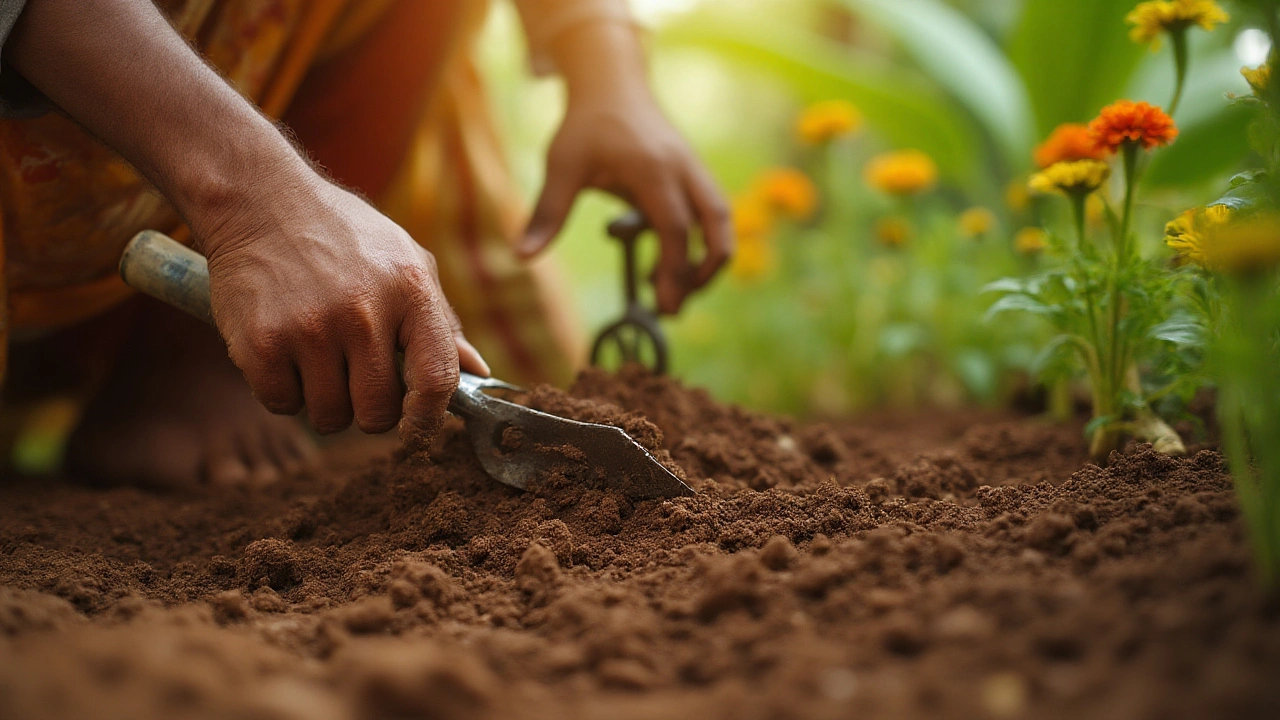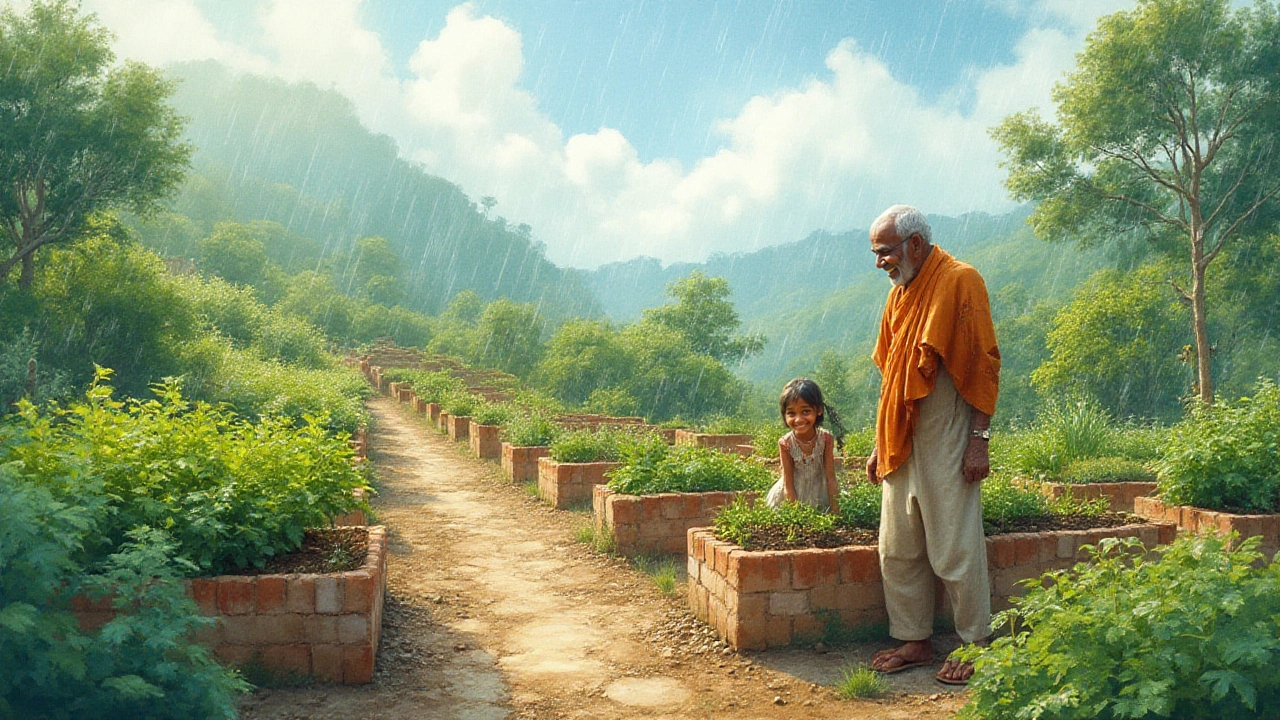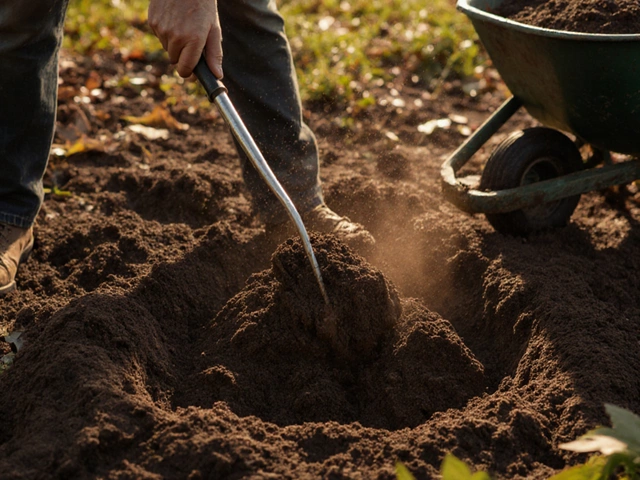Heavy, sticky soil isn't just a pain for gardeners—it's a death sentence for delicate roots. Countless houseplants I've had have perished quietly in soggy pots, their leaves drooping like they've given up all hope. Even Fluffy, my ever-curious cat, avoids stepping on muddy patches in the garden, preferring her sunny perch by the window. It doesn't have to be this way. Whether your backyard borders Brighton clay or you’ve got old compost clogging a raised bed, you can rescue your garden by creating free-draining soil. Your plants will thank you, and honestly, so will your shoes.
Understanding Why Your Soil Isn’t Free Draining
Have you ever dug a hole for a new shrub, watched rainwater fill it, and found that hours later it’s still pooling at the bottom? That’s the classic breakdown of drainage: water simply refuses to move through the soil. Here’s the science—soil particles are different sizes and types. Clay soils, common near Brighton and most of Southeast England, have minuscule particles, so they pack tightly together, trapping water for ages. Sandy soils are the opposite, with big, loose grains that let water run straight through. Loam lies somewhere in the middle, offering a mix of drainage and moisture retention. But most gardens aren’t blessed with perfect loam, are they?
Let’s get specific. The ideal soil for most plants is about 40% sand, 40% silt, and 20% clay, which gives structure without squeezing the life (or air) out of roots. But a soil test—yes, those DIY kits are cheap and actually work pretty well—often tells a more dramatic story. Many gardens in Brighton are heavy on clay, so the texture is dense, sticky, and prone to compacting after you walk on it. Compacted soil means less pore space for water and air, creating the kind of conditions where roots rot and worms suffocate. An average clay soil holds about double the water of a sandy soil. In fact, one cubic metre of clay can hold more than 500 litres of water—imagine an entire bathtub sloshing around under your feet!
Roots need air. In badly-drained soil, oxygen vanishes, replaced by carbon dioxide, and the microbes responsible for breaking down nutrients simply slow to a crawl. Fungi and bacteria that like boggy conditions start to move in, causing root rot. Tomatoes, lavender, succulents, and Mediterranean herbs are the first to go—sometimes overnight—while ferns and willows cling on. In 2023, a study in Sussex found gardens with improved drainage had 35% fewer pest and root disease outbreaks than those left with their native soils. It's a stark reminder: healthy soil is about balance, not just what's easy underfoot.
Of course, drainage matters just as much in raised beds or potted plants. Old potting mixes break down over time, turning fluffy compost into a compact, airless slab. Even pots with big drainage holes can become boggy if the soil turns dense, especially if you use peat-based mixes without regular replacement. Some gardeners blame the rainy English weather—and fair enough, Brighton does average around 855 mm of rainfall a year—but even the wettest spots can be managed with the right amendments.
Ever notice moss and algae gathering in the shadiest, soggiest parts of a lawn? That's your backyard’s way of asking for better drainage. You know you need to take action when even Fluffy's catnip plant develops powdery mildew from too much moisture. Plants aren’t the only ones struggling: your soil’s structure and overall ecosystem suffer, too, as earthworms and beneficial insects move away.
Now that it's clear why poor drainage is a big deal, let's look at how to actually tackle it. Spoiler: there's no silver bullet, but there's a toolbox of clever fixes to suit every budget and energy level.

The Best Amendments to Make Soil Free Draining
Making soil freely drain is part science, part kitchen experiment. You take what you have, mix in a little of that, sprinkle on some magic, and hope for the best—but you don’t need luck if you know what works. Let’s break down your options, from everyday tweaks to serious overhauls. I've spent plenty of Saturday mornings up to my elbows in old compost and builder’s sand, so I promise, these tips have been road-tested with muddy boots and broken nails.
Free-draining soil starts with structure. The fastest way to achieve this is by mixing larger, coarser particles into the fine, sticky ones already present. Here are the go-to ingredients:
- Sharp Sand (Horticultural Grit): Unlike building sand, which is too fine and easily compacts, sharp sand or horticultural grit consists of larger chunks that create air pockets. It’s the secret sauce for potting mixes destined for succulents or cacti. I add up to 50% grit or sand by volume for extremely heavy clay soils, blending it in as deeply as my spade allows.
- Perlite or Vermiculite: These are volcanic minerals that have been popped in an oven (imagine tiny, white balls or golden flakes). Light as popcorn, they hold their shape and stay loose in soil for years. I use perlite for maximum drainage and vermiculite when I want a little water retention. A generous handful per 10-litre pot goes a long way.
- Organic Matter (Compost, Well-Rotted Manure): Not all composts are created equal! Homemade compost, or that sweet-smelling stuff from a reliable garden centre, is crumbly and loaded with life. It boosts drainage by attracting earthworms, which dig little tunnels and aerate everything for you. Compost also acts like a sponge—so it balances out the sand and grit, providing nutrients and structure. I add about 1 part compost to every 2 parts clayey soil.
- Leaf Mould: This is just last autumn’s leaves broken down into rich, dark crumble. It’s half mulch, half soil conditioner. Surprisingly, leaf mould can improve both heavy and sandy soils, making clay lighter and sand less leaky.
- Pine Bark or Fine Wood Chips: I’ve had success blending in a few handfuls of fine pine bark, especially with perennial beds. It boosts structure and lets water move through, plus it slowly breaks down and feeds fungi. Just don’t overdo it or you’ll tie up too much nitrogen in the soil.
- Biosolids or Coco Coir: Eco-friendly and long-lasting, coco coir comes from coconut husks and works like a lightweight sponge in potting mixes. Biosolids, a fancy word for processed, pathogen-free sludge, are popular in some soils (though less common in Brighton gardens).
If you prefer hard numbers, here’s a look at how popular amendments compare for drainage improvement, based on real-world garden trials:
| Amendment | Effectiveness for Drainage | Average Cost (per 50L) |
|---|---|---|
| Sharp Sand / Grit | High | £6 |
| Perlite | High | £9 |
| Homemade Compost | Medium | Low (free-£4) |
| Leaf Mould | Medium | Free |
| Coco Coir | Medium | £7 |
| Pine Bark Fines | Medium | £5 |
Let’s be clear about what doesn't work: Peat (as it compacts fast), builder’s sand (too fine), and plain sawdust (ties up nitrogen as it decomposes). Stick with gritty, chunky amendments like those above. For new beds, aim for a 1:1 ratio of soil to amendments if the ground has a stubborn clay base. For container mixes, 30-50% amendment should do the trick.
Bonus tip: Amend soil in autumn or early spring for best results—that’s when soil life is waking up, giving your changes a turbo boost. Don’t rush and dump it all on top, either. Dig deep—at least 20 cm, sometimes more for shrubs or trees—and turn the soil gently to avoid creating a smeary pan of compacted earth at the bottom.
Want an easier method for small plots or potted plants? Repotting every two years, removing the top third of spent soil and replacing it with fresh mix plus some perlite, transforms even the most tired indoor collection. Fluffy’s favourite pot of spider plant went from limp and sad to glossy and bushy after I finally swapped the ancient, compacted compost for a homemade blend with 40% perlite and some leaf mould scraped from under the apple trees.
For lawns, spike aeration really helps—just pushing a garden fork into the ground every 10-15 cm, wiggling gently, and brushing sharp sand into the holes. It's an annual spring ritual around here, and you really can see the grass green up almost overnight after rain. If you’re not a fan of blisters, borrow or hire an aerator (they sound like angry kettles but do a stellar job).

Tips and Mistakes: Keeping Soil Free Draining All Year Round
You’ve made the changes—now how do you keep things loose and lovely? Gardeners sometimes forget that soil, even when ‘fixed,’ is never finished. Nature always tries to go back to compacted clay or depleted sand if you don’t keep an eye on things. I once spent three weekends revamping a vegetable bed, only to watch it return to a puddle six months later because I stopped topping up organic matter. Lesson learned!
Regularly add more organic material. Think of compost and leaf mould as booster shots; topping up two or three times a year is ideal, especially after big harvests or messy winter storms. Every season, rake a generous layer onto beds and let rain and worms do the work. If you spot earthworms wriggling about, you’re on the right track.
Don’t compact your soil by walking on it when it’s wet. This is probably the number one rookie mistake people make after heavy rain—myself included, chasing Fluffy through the bean patch. Place stepping stones or wooden planks through frequently-used garden beds to spread your weight, or just wait until things dry out a little before jumping back in.
Take rainfall into account. In places like Brighton, with the odd downpour, installing drainage channels or using raised beds can be a real game changer for big trouble spots. Even simple French drains—just a gravel-filled trench—along the worst paths provides fast relief without a big budget.
Check pH and nutrient levels after any major change. For instance, adding lots of sharp sand can make your soil a bit more alkaline, so Mediterranean herbs like rosemary or sage will thrive, but azaleas might sulk. A cheap pH kit from the garden centre helps catch issues before they become disasters.
Here’s a rookie DIY tip: fill a jam jar halfway with your existing soil, top up with water, shake until your arms ache, and let it settle. Sand, silt, and clay form distinct layers. It’s instant feedback on how well your amending has gone—plus, it’s oddly satisfying to see the transformation week on week.
Trouble with drainage persisting in certain spots? Planting the right things really helps: stick with willows, astilbes, or Siberian irises in particularly stubborn wet patches instead of struggling with Mediterranean herbs or succulents that need dry feet. And in containers, make sure every pot (even decorative ones) has at least one oversize drainage hole, plus ceramic shards or terracotta pieces at the bottom to keep channels clear.
- Mulch when needed but don’t overdo. Too much heavy mulch can smother soil, especially if it’s already heavy. Choose lighter mulches such as bark chips or leaf mould for best results.
- Root aeration: After planting, gently lift and loosen roots so they point outward—not in tight coils. Tangled roots, even in well-draining soil, can suffocate over time.
- Check for waterlogging after storms: if puddling returns, break up the soil surface again and mix in additional sand or compost. Your plants will pay you back with bigger, healthier growth.
Over time, free-draining soil becomes easier to manage, even with Brighton’s unpredictable weather. Plants grow deeper, stronger roots and shrug off a rainy week. I’ve seen tomato roots hit half a metre deep in a single summer—impossible in old, compacted beds. Fluffy seems to sense the difference too; she’s now happy wandering among the onions and beans without sinking an inch. That’s the moment you know you’ve made the transformation stick—not just for a season, but for the long haul.



